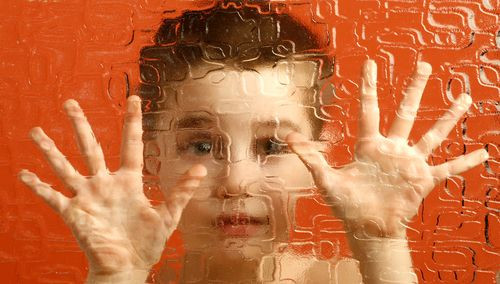Signs Of Autism Detected In Children As Young As 6 Months Old; Early Intervention Could Lead To More Successful Treatments

Many people understand that diagnosing autism earlier as opposed to later makes a considerable difference in a child’s development. Now, a team of researchers have identified signs of autism that may be present in 2- to 6-month-old infants.
“By following these babies from birth, and intensively within the first six months, we were able to collect large amounts of data long before overt symptoms are typically seen,” Warren Jones, Ph.D., director of research at Marcus Autism Center and assistant professor in the Department of Pediatrics at Emory University School of Medicine, stated in a press release.
Diagnosis: Autism
Autism is a spectrum of closely related neurodevelopmental disorders that share symptoms and disability in the same core area. The signposts of autism are disturbances in social relations, communication, and behavior. In particular, the conduct of autistic individuals is influenced by preoccupation, an adherence to rituals, and motor mannerisms. For instance, typical behavior of a child with autism includes rocking back and forth, headbanging, and obsessively lining up toys. The most common and possibly most painful signal of autism is when a child makes little or no eye contact, even with a parent when in a new and frightening situation. Babies explore the world by looking at objects, bodies, faces, and especially by peering into their parents’ and other people's eyes. This natural aspect of infant activity, scientists believe, spurs brain growth and maturation.
While researchers have clearly outlined the warning signs of autism, accepting these signs in your own child is a difficult task for loving and hopeful parents. Perhaps for this reason, the average age when a child in the U.S. is diagnosed with an autism spectrum disorder (ASD) is around 4 years old. Intervention, then, generally happens at a stage when it may be less able to redirect a child's development. Yet, this may soon begin to change due to the work of scientists from the Marcus Autism Center, Children's Healthcare of Atlanta, and Emory University School of Medicine who identified markers of social disability in month-old infants who were later diagnosed with autism.
Necessary Eye Contact
Using eye-tracking technology, the researchers followed two groups of babies from birth until 3 years of age and measured the way infants look at and respond to social cues. The first group of infants was at high risk for ASD. Each infant had an older sibling already diagnosed with autism; therefore, their own risk of having the condition is increased 20 fold. In contrast, the second group of low-risk infants had no first-, second-, or third-degree relatives with autism.
Over three years, the team tracked and assessed all of the children. At age 3, any diagnosis of autism could be confirmed. In addition, the researchers went back at that point and analyzed all the data they had collected from the children’s first months of life to identify what separated the autistic children from those whose development progressed normally.
"We found a steady decline in attention to other people's eyes, from two until 24 months, in infants later diagnosed with autism," Ami Klin, Ph.D., chief of the Division of Autism & Related Disorders in the Department of Pediatrics at Emory University School of Medicine, stated in a press release.
In fact, those infants later diagnosed with autism showed declining attention to others’ eyes from the age of 2 months onwards, leading researchers to conclude that measurable and identifiable differences were present within the first six months. “We observed declining eye fixation over time, rather than an outright absence,” Klin stated in a press release, indicating such findings have “the potential to dramatically shift the possibilities for future strategies of early intervention.”
Future Steps
“We used very specialized technology to measure developmental differences, accruing over time, in the way that infants watched very specific scenes of social interaction,” Jones stated in a press release. Unfortunately, because specialized technology is necessary, what the researcher detected is not something parents would be able to identify on their own. That said, parents also should not be concerned if an infant doesn't happen to look at their eyes at every moment. It is natural for a baby to look around at all aspects of their environment.
The researchers emphasized the optimistic implications of their research. Though attention to others' eyes is already declining by 2 to 6 months, it is not entirely absent in autistic infants, and this offers hope. If infants could be identified at an early age, the researchers suggest, interventions might, then, successfully build on the levels of eye contact that already exist.
"Our next step will be to expand these studies with more children, and to combine our eye-tracking measures with measures of gene expression and brain growth," Jones stated in a press release.
Source: Jones W, Klin A, et al. Attention to Eyes is Present But In Decline in 2-6 Month-Olds Later Diagnosed with Autism. Nature. 2013.



























